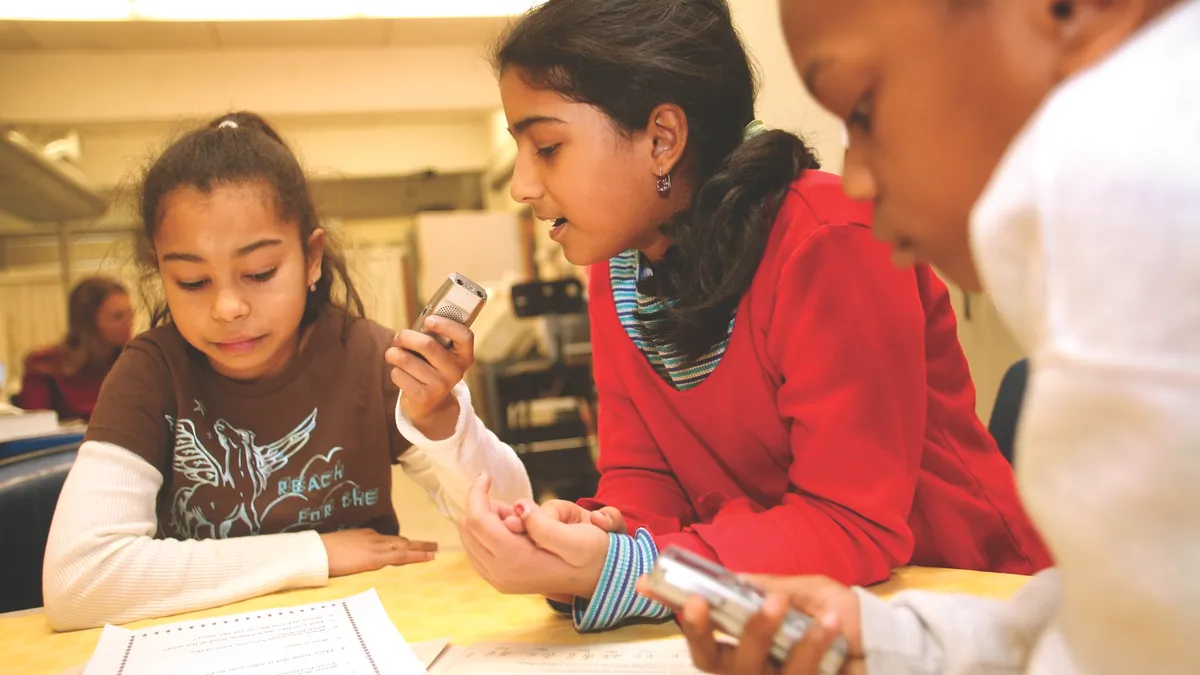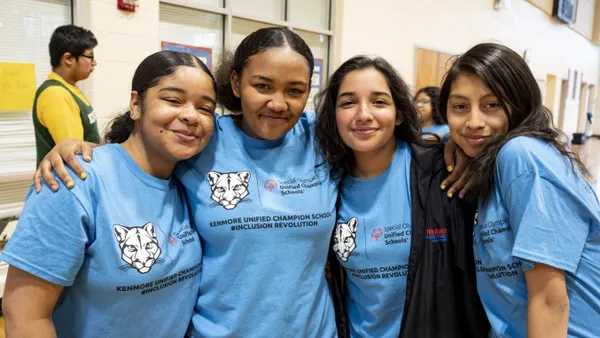When one school in Salem, Massachusetts, received a “Level 4” designation in the state’s accountability system — thereby causing the entire Salem Public Schools to receive the same low rating — city leaders began looking for ways to bring schools and community partners together to improve outcomes for students.
“We have definitely struggled to meet the needs of all kids,” Salem Mayor Kim Driscoll said in an interview. “We also know and recognize that what happens outside of school has such a big impact.”
Driscoll and the city’s children’s cabinet began working with the Education Redesign Lab at Harvard University as part of its By All Means initiative. And they partnered with City Connects, a Boston College program, to bring coordinators into schools who link together the various in-school and out-of-school programs serving students. The coordinators and teachers develop a personalized plan for each student when he or she enters pre-K that might include healthcare needs, afterschool and enrichment programs, and specific interventions, if needed.
“Education is really a community mission in Salem,” Driscoll said.
That’s the model a paper released Wednesday by the Education Redesign Lab is urging more communities to adopt.
“These personalized plans are tools as well as processes for capturing the full range of strengths and needs of children and youth in order to connect them with tailored, seamless, and equitable services and opportunities,” wrote Saeyun D. Lee, an education policy consultant and the author of the report. "While personalized plans represent a promising approach, they are largely underemployed in the field of education.”
Highlighting examples of personalized success plans from across the country — collected as part of the research process — the paper identifies principles to guide school districts and other community partners in creating similar models. These include taking a comprehensive approach to a child’s academic success, health and overall well-being, making sure there are sufficient staff members to form relationships with students and their families, and identifying the ways services and support programs will be provided to students.
The report also comes as the majority of states are either requiring or encouraging districts to develop individualized learning plans for students that focus mostly on college and career readiness as part of their plans for the Every Student Succeeds Act (ESSA).
"ESSA allows states to deploy various strategies to redesign learning and strengthen student outcomes, including approaches such as personalized learning and integrated student support," Paul Reville, founding director of the Education Redesign Lab, noted in an email. "This flexibility could create opportunities for states to incorporate comprehensive personalized plans into their reform efforts that address both the academic and non-academic needs of students."
Last fall, researchers from Boston College released a study on City Connects, showing that elementary school students who received comprehensive services as part of the program, which began in Boston Public Schools roughly 20 years ago, were almost half as likely as those not in the program to become high school dropouts.
Other models highlighted in the report include the Individual School Readiness plans created for children in Colorado’s public pre-K and kindergarten programs, the individualized graduation and postsecondary plans that Treehouse, a nonprofit in Seattle, creates for middle and high school students in foster care, and the individualized service plans that Youth Policy Institute in Los Angeles develops to set short- and long-term goals for students in elementary through high school.
When schools manage these plans, a key to making them work is a school-based coordinator, the report concludes. These types of positions typically exist in a community school model, but Reville, who also served as the state education secretary in Massachusetts, said while many community schools bring together a range of services and support programs for students, “these are often not individually personalized and do not include the creation or implementation of a plan specific for each child.”
Communities in Schools, another model mentioned in the report, does include site coordinators who create individualized plans for students considered most at risk. In the paper, Lee writes that these plans have the potential to address opportunity gaps because they often focus on children and youth who have lacked access to services and programs, either because their families have fewer financial resources or they live in communities without a variety of options.
Reville, however, said such plans should not be considered a response just for students with the greatest needs.
“Success Plans are promising tools for identifying the strengths, interests and needs of all children,” he said, using City Connects as an example. “The number and type of services varies by level of need, but every child has a plan. The model is proven to bolster student outcomes, including academic achievement and attainment. These results suggest that personalized plans offer benefits for all students.”
Personalized learning models, in which students progress at their own pace usually with digital platforms, might also fit into the success plan model, but the personalized plans capture “children’s well-being across a range of important developmental domains, not only academic outcomes,” Reville said. “Success Plans are records that are intended to capture a child’s holistic strengths, interests, and needs, both in and out of school.”
Another common thread seen in the models featured in the report is an emphasis on youth empowerment and giving students more control over setting goals and monitoring their progress. The paper recommends that communities create structures such as a “children’s cabinet” to bring together representatives from education, health, out-of-school-time and other sectors “who can address issues across the birth through postsecondary continuum.”
But at a time when concerns over student privacy are growing, the paper also stresses the importance of clear protocols for who can access the plans and attention to "the security and confidentiality of student data."






















